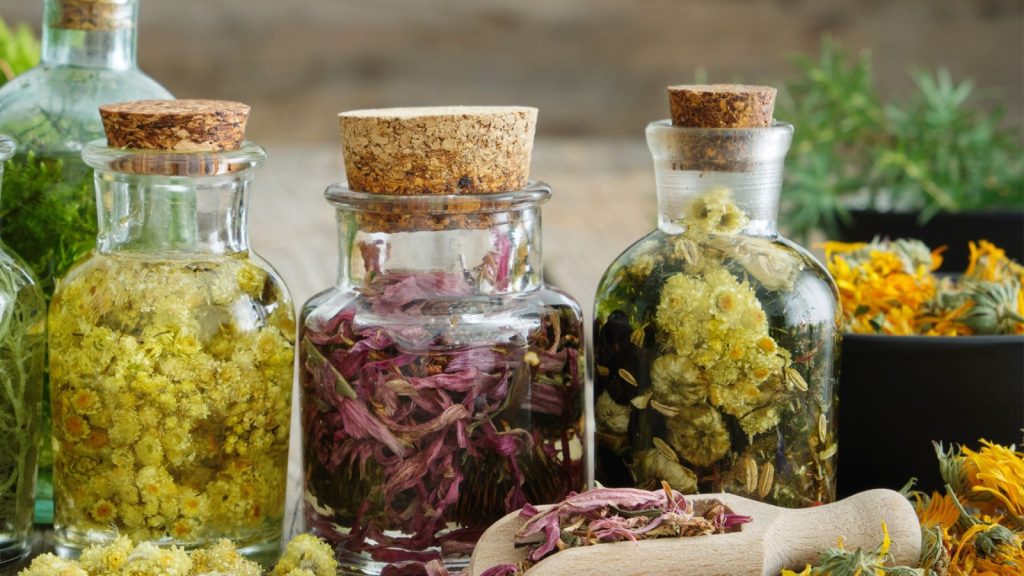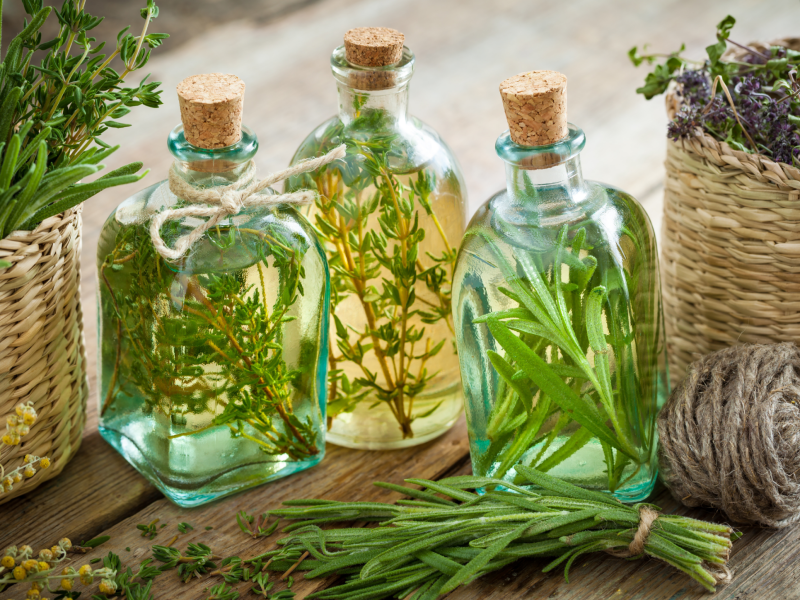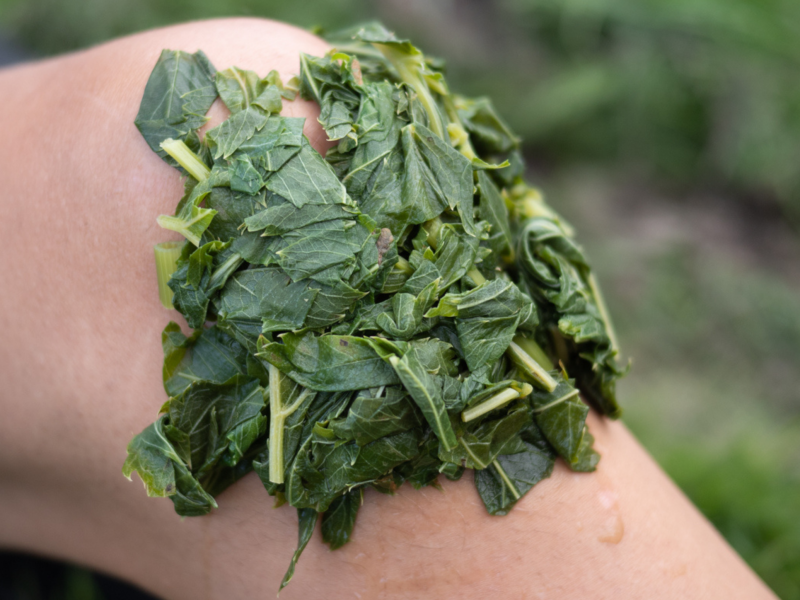How to make a glycerite
What is a glycerite?
Glycerites are herbal extracts made using glycerine, often combined with alcohol and/or water, collectively known as the menstruum. They are also referred to as glyco-extracts or glycetracts.
Glycerine is a sweet and colourless liquid that can be an effective solvent as it is highly polar and soluble in water, hence water-soluble compounds can be effectively extracted in glycerine.
To make glycerites, fresh or dried herbs are soaked in the glycerine menstruum in a sealed container for several weeks. Stirring daily helps extract and preserve the plant’s soluble phytonutrients.
What is a glycerite used for?
Glycerites have many uses thanks to their soothing and moistening properties. Common applications include:
- Moisturising dry tissues: The emollient nature of glycerites helps to hydrate and soothe areas of dryness, making them beneficial for skin, lungs, and digestive tract discomfort.
- Calming irritations: Glycerites are often used in remedies for irritated tissues, particularly in the lungs and digestive system, due to their softening effect.
- Supporting lung health: They are frequently found in formulations to ease lung congestion and dryness, offering relief from coughing and respiratory discomfort.
- Gentle extraction and preservation: Glycerites are sweet, alcohol-free alternatives for extracting and preserving the active compounds in herbs, making them ideal for children or individuals avoiding alcohol-based tinctures.
The primary ingredient, glycerine (or glycerol), is a type of alcohol produced by the hydrolysis of fats. Specifically, it is a polyol, meaning it contains multiple alcohol groups. However, it is not the same as ethanol, the alcohol typically found in alcoholic drinks, and does not have the same intoxicating effects. Glycerine can be produced in various ways, with water and high pressure being common methods. It is important to choose an organic, plant-based source, as glycerine is commonly extracted from soya beans, palm oil and can also be derived from animal fats or produced synthetically.
Which herbs can I use to make a glycerite?
These are some of our favourite herbs to make a glycerite:
-
Chamomile, German
£2.50 Inc VAT -
Lavender, English
Price range: £2.75 through £7.00 Inc VAT -
Tulsi
£3.25 Inc VAT
There are many other herbs you can use to make a glycerite:
How do I make a glycerite?
Prep Time
30 mins
Infusion Time
2-4 weeks
Shelf life
14-24 months
As each herb has specific requirements and to ensure the best results, it is important to use the appropriate solvent strength, volume of menstruum and particle size to extract the phytonutrients you want.
It is very important to preserve the glycerite properly that you use the correct strength of glycerine. At a minimum it should be 60% glycerine/40% water.
When using fresh plants the herb juice will dilute the glycerine so use a strong blend of 1 part herbs to 2 parts menstruum with 80-90% glycerine. You can also add 10-20% alcohol to enhance extractive properties.
Ingredients
- 100g Herbs – finely cut
- 350ml Glycerine
- 150ml Water
- Alcohol (adjust with water volume as appropriate)
Equipment
- Jars for storing the maceration
- Measuring jug
- Scales
- Record book
- A mill
- A chopping board
- Pestle and mortar
- Pen and label

Method
- Prepare the herbs: Cut the herb into small pieces and weigh the appropriate amount.
- Create the glycerine solution: Add the suitable strength of glycerine with the water, ensuring the herbs are submerged. It is important that the herbs are covered entirely by the menstruum so there is no oxidation or bacterial contamination.
- Store and wait: Place in a sealed and labelled jar, in a cool dark spot for 2-4 weeks.
- Agitate daily: Stir or gently shake the jar every day to keep the herbs well mixed and aid the extraction process.
- Strain the glycerite: After the infusion period, strain the mixture to remove the herbs, known as the ‘marc.’ You can use a sieve, muslin cloth, or a small press to squeeze out every drop of liquid.
- Label and store: Pour the finished glycerite into a clean bottle, label it with the date, and store it in a cool, dark place. Your glycerite is now ready for use.
- Use as appropriate for the specific herb and need.


Helpful Hints
- A starting guide for dry herbs is to use a ratio of 1 part herb:5 parts menstruum (the liquid solvent) – in this example it means you know that 5ml of the finished tincture extract is equivalent to 1g of the herb.
- Alcohol: Vodka is recommended here as it doesn’t mask the taste of the herbs. If you have access to pure spirit you can dilute that as per your needs for each tincture.









